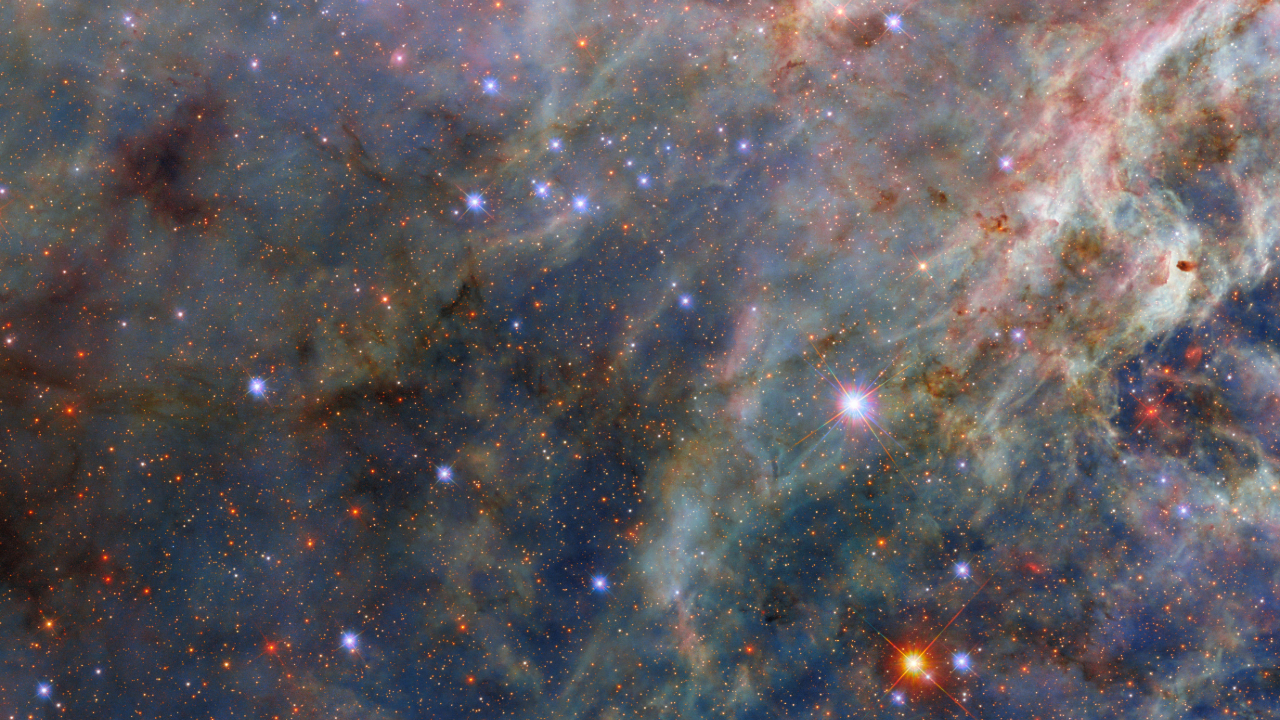Mercury a Possible Hit-and-Run Planet
New computer modeling shows that the planet Mercury might have formed in a hit-and-run collision that stripped off its outer layers.
Astronomers have long assumed that collisions played a huge role in planet formation. The early solar system would have been loaded with dust that became rock that became planets, the thinking goes. Computer models generally have objects sticking together to make ever-larger objects or, in large crashes, two objects might become gravitationally bound.
In the new scenario, a glancing blow would dramatically alter the smaller object, even disintegrating it into pieces that could be some of the space rocks that land on Earth to this day.
"You end up with planets that leave the scene of the crime looking very different from when they came in-they can lose their atmosphere, crust, even the mantle, or they can be ripped apart into a family of smaller objects," said Erik Asphaug, a researcher at the University of California at Santa Cruz who led the work.
The idea is detailed in the Jan. 12 issue of the journal Nature.
Other scientists have modeled collision scenarios in which the remains form two objects that end orbitally bound. Earth's Moon, for example, is thought to have been formed when a Mars-sized object slammed into our fledgling planet. Pluto's largest satellite, Charon, may have formed in a similar impact.
Explaining the solar system
Breaking space news, the latest updates on rocket launches, skywatching events and more!
Shortly after the Sun's formation 4.6 billion years ago, a disk of gas and dust orbited the newborn star. Dust grains gathered to form rocks. Some collided and stuck, and eventually comets, asteroids and planets developed.
Asphaug and his colleagues, including UCSC professor Quentin Williams, figure there might have been 100 or so objects as large as the Moon or Mars that played cosmic billiards in those early years.
When two objects interacted, even in a near miss, the effects would have been dramatic.
"As two massive objects pass near each other, gravitational forces induce dramatic physical changes-decompressing, melting, stripping material away, and even annihilating the smaller object," Williams said. "You can do a lot of physics and chemistry on objects in the solar system without even touching them."
A smaller planet's self-gravity, which holds it together, would depressurize in the sudden presence of a larger world.
"It's like uncorking the world's most carbonated beverage," Williams said. "What happens when a planet gets decompressed by 50 percent is something we don't understand very well at this stage, but it can shift the chemistry and physics all over the place, producing a complexity of materials that could very well account for the heterogeneity we see in meteorites."
Asphaug outlined more of the suspected drama:
"Imagine two planets colliding, one half as big as the other, at a typical impact angle of 45 degrees. About half of the smaller planet doesn't really intersect the larger planet, while the other half is stopped dead in its tracks," Asphaug said. "So there is enormous shearing going on, and then you've got incredibly powerful tidal forces acting at close distances. The combination works to pull the smaller planet apart even as it's leaving, so in the most severe cases the impactor loses a large fraction of its mantle, not to mention its atmosphere and crust."
What's left of Mercury
Rocky Mercury may have been a hit-and-run impactor that had much of its outer layers stripped away, leaving it with a relatively large core and thin crust and mantle, Asphaug speculates.
More work is needed to determine if the idea is valid, the researchers stressed.
Hit-and-run might also explain the widely varying composition of asteroids, including the chunks that fall to Earth as meteorites. Stony asteroids resemble the rocky crusts of planets, while others are rich in iron, like the core of a planet. The range of space rock compositions is not easily explained if they all formed from the same disk of debris.
"Some asteroids look like small planets, not very disturbed, and at the other end of the spectrum are ones that look like iron-rich dog bones in space," Williams said.
The hit-and-run scenario fits neatly with this diversity of compositions.
"This is a mechanism that can strip off different amounts of the rocky material that composes the crust and mantle," Williams said. "What's left behind can range from just the iron-rich core through a whole suite of mixtures with different amounts of silicates."
- Is Mercury the Incredible Shrinking Planet?
- Mysteries of Mercury: New Search for Heat and Ice
- 24 Hours of Chaos: The Day The Moon Was Made

Rob has been producing internet content since the mid-1990s. He was a writer, editor and Director of Site Operations at Space.com starting in 1999. He served as Managing Editor of LiveScience since its launch in 2004. He then oversaw news operations for the Space.com's then-parent company TechMediaNetwork's growing suite of technology, science and business news sites. Prior to joining the company, Rob was an editor at The Star-Ledger in New Jersey. He has a journalism degree from Humboldt State University in California, is an author and also writes for Medium.
